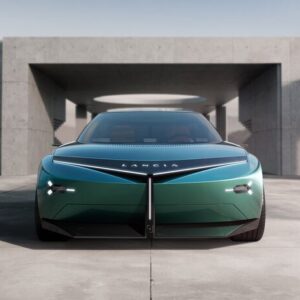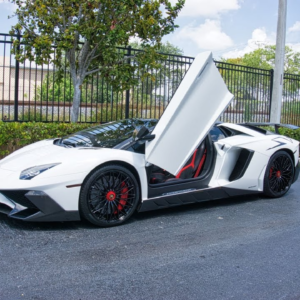The seller is offering a rare 1987 De Tomaso Pantera GT5-S that he reports buying new through AmeriSport, one of several gray-market importers that brought these into the country. He believes it was one of 27 brought in by that importer and says there may be just five of this year and model left in the world. The miles shown on the odometer were from early driving. He stored the car for several decades and recently put it through a complete restoration. As the included photos show, this was a complete disassembly process, with the body taken down to bare metal. He reports all-new suspension and a correct replacement Ford 351 Cleveland V8 engine. A $350,000 restoration cost is cited.

Originally a collaboration between Ford Motor Company and Italy-based Argentine expatriate and ex-racer Alejandro de Tomaso, the mid-engine Pantera combined Italian design and construction with reliable American horsepower. Ford sold the Pantera through its Lincoln-Mercury franchise from 1971-’74, alongside the German-built Capri. The Pantera sold for nearly $11,000 in 1971, about double the price of a base Corvette. Ultimately, about 5,200 were sold. Afterward, de Tomaso kept building the car in smaller numbers through 1992. Around 1980, the company issued the GT5 model, giving the body an assortment of wings, flares, scoops, and vents inspired by another Italian exotic, the Lamborghini Countach. In 1985, a GT5-S replaced it and featured integrated steel widebody fenders rather than the riveted-on fiberglass flares of the GT5. These later Panteras were more luxurious than the models sold in the U.S. in the early ’70s. Since Ford had stopped making the “Cleveland” engine in the U.S. in the ’70s, de Tomaso sourced the same engines from Ford’s Australia operation until supplies ran out.

De Tomaso claimed 310 horsepower at 6,000 rpm and 330 lb-ft of peak torque at 3,800 rpm for the Ford 351-cu.in. OHV V8 with four-barrel carburetor. The seller says the engine in this car is a new replacement with 136 miles and is “running properly,” with no leaks or weeps. It is teamed with the original German-built ZF five-speed manual transmission. (An in-period road test of a Pantera GT5 sold by a different importer showed 0-60 in 5.2 seconds, a quarter mile in 13.4 seconds at 102 mph and a 140-mph top speed.)
The seller states that the Pantera was painted two years ago in its original white color and has been garaged since. There are no blemishes, the glass and windows are in good shape, and the seals don’t leak, he states. The vehicle has “no rust,” and the lighting works as it should.

According to the owner, the car has been fully recarpeted to original specs, and the interior trim is intact. The white leather seats were fully reupholstered to original specs and “are in great shape.” The headliner is new, and both the heat and A/C work. The power windows function properly, and the gauges are accurate. The seller says the car was not originally equipped with a stereo but that he added a new one with Bluetooth, with two speakers mounted behind the seats.

The seller affirms that the Pantera has a brand-new suspension, bushings, and shocks, and some of this work can be seen in the photos. The re-issued Pirelli P7 tires were installed during the restoration and show 2019 DOT manufacturing date codes on the 285/40VR15 front tires and 2018 dates on the 345/35VR15 rear tires. The seller says they have 100 percent of tread remaining, as the car has not been driven. They’re mounted on the original wheels, which the seller confirms have no curb rash, pitting or vibrations. The steering points straight, and there is no play or vagueness in the wheel, he states. The four-wheel disc brakes function as designed.

The seller states that this vehicle will be sold on a clean California title in his company’s name. He will include invoices and pictures of the restoration process. A gray-market import to the U.S. when new, this 1987 De Tomaso Pantera GT5-S is being offered by its original owner. He gave the car a comprehensive and expensive restoration after it had sat for many years. The work was fully documented, including with photos. Just play Jan Hammer’s Miami Vice theme through the new stereo, and you’ll be right back in 1987.





